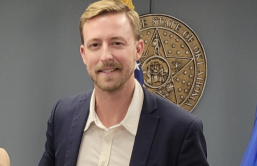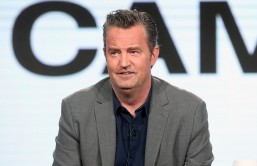The second patient who was cured of HIV, has no remissions from HIV for more than two years already, as reported from a research published by The Lancet HIV on Tuesday.
Adam Castillejo was called the "London patient" when he started treatment about 2.5 years ago and has since completed the HIV antiretroviral therapy.
The treatment that was administered included a stem cell transplant treating his lymphoma, with a mutation from the donor cell that is called CCR5-delta 32, that increases resistance to HIV.
According to researchers when his lymphoma was treated, Adam Castillejo who is 40-years old is cleared of HIV.
HIV (human immunodeficiency virus) is an infection that is viral which assaults the immunity systems of individuals, with consequences that impact health seriously. The only way to cure it is by treating it with a combo of drugs, known as antiretroviral therapy which lessens the viral content in the patients' blood. Preventing it with PrEP, that is already approved by the US FDA administration from 2012.
Based on the findings of UNAids, there are 37.9 million individuals infected with HIV in 2018.
According to Ravindra Gupta, lead author of the study (University of Cambridge's clinical microbiology department), the success of using stem cell transplantation to cure HIV is first heard of about 9 years ago in a Berlin patient. Medical experts want to check if this could be duplicated in another patient. The second HIV patient was cured with almost the same treatment.
Also read: Six RAF Typhoon Jets Intercept Russian Planes as They Reach the Scottish Territory
As an adjoining Washington state legislators voted for a lesser penalty for purposely exposing a sex partner to the HIV virus.
Compared to Timothy Ray Brown, the Berlin patient, the London patient only had one stem cell transplant, not two like the Berlin patient, and there's no radiotherapy done to his entire body which is part of the treatment. Both patients had differences done when undergoing treatment.
Approaches to the London patient is one of a less intensive treatment approach, according to the authors of the study.
Authors express misgiving with the invasive nature of the treatment, which is still essentially experimental for the most part.
Gupta commented," Using this curative treatment is a high-risk option, allowable only if it is the last resort for patients with HIV that are diagnosed with dangerous haematological malignancies." He added that not all patients will be offered the treatment unless they need it.
Castillejo is just the second patient to be treated with this experimental procedure with success, the researchers said the London patient needs to be monitored, to track if the HIV virus does re-assert itself.
In an interview, Sherwin Lewin, the director of the Peter Doherty Institute for Infection and Immunity at the University of Melbourne, cited the London patient as an exciting advance, viewed in context is needed that the procedure is promising and time will determine its efficacy.
According to Castillejo in an interview with the New York Times, he decided to come out in public to reveal himself as the London patient, after years of treatment and despair whether he can be cured.
Finally identifying himself as the London patient cured of HIV, and the second success of the treatment, he wants to be an ambassador of hope.
Related article: Hand-washing vs. Hand Sanitizers: Which Works Better to Avoid Coronavirus Spread?








